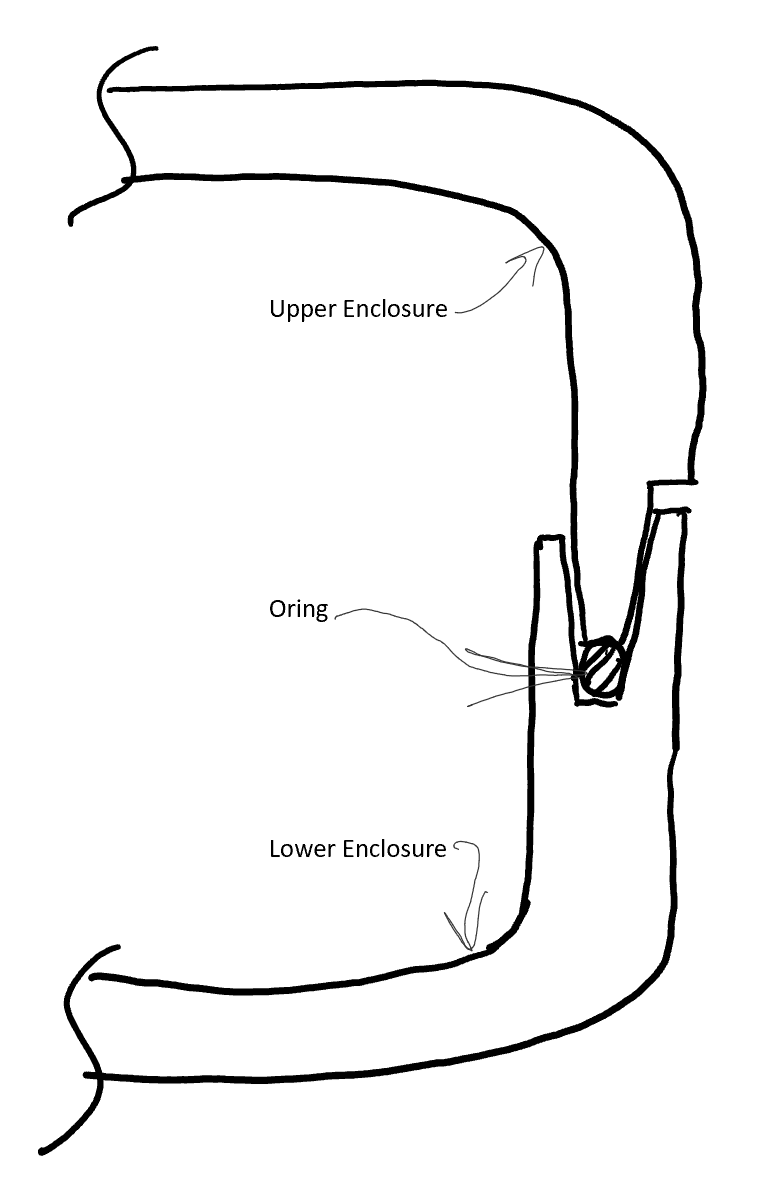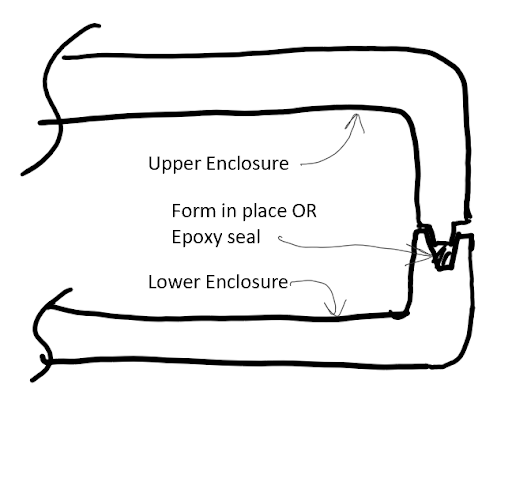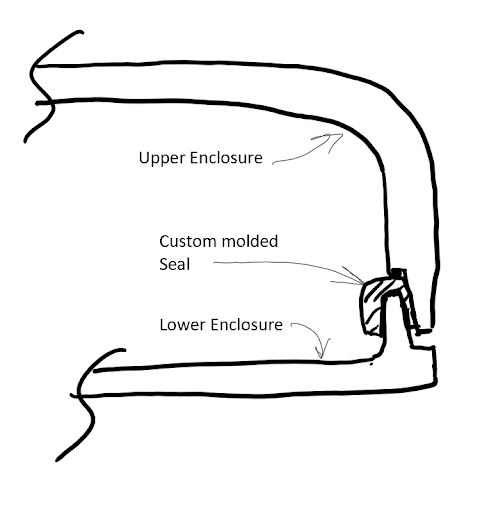Waterproof enclosures are used in many industries, from oil fields to consumer electronics.
Unfortunately the term “waterproof” tends to be subjective. For your application how “waterproof” is enough?
The “Ingress Protection (IP)” system is an evaluation of electronics housings that gives real meaning to the term “waterproof". It provides real tests that must be passed for different levels. The system has two unrelated numbers following the IP: The first number indicates how dustproof an enclosure is and the second indicates how waterproof it is. A good table of the IP ratings can be found at https://en.wikipedia.org/wiki/IP_Code.
For a waterproof enclosure design, we check all of the items in this checklist and more. Some of the items in the list are general guidelines and we often need to use engineering judgment on the trade-off between the size, cost, and manufacturability of the enclosure.
Sealing material
Check that the sealing material conforms easily to the flange surfaces
Review possible variations in the effects of temperature and pressure
Verify the elasticity of the material
Review the deterioration over time (i.e. chemicals, cracking, creep)
Check for the risk for dirt, water, and other contaminants
Confirm RF sealing AND water sealing as needed
Verify sufficient clearance for material compression
Review compression force vs sealing capacity
Verify tolerance allowance and compliance
Review premade gasket vs dispensed gasket
Check for the possibility of outgassing
Confirm the availability of components
Research the cost
Review manufacturability
Housing material and configuration
Review type of housing material
Verify environmental resistance (temperature, ice, rain, wind, dust, sun)
Review shape stiffness vs number of fasteners vs locations for proper compression
Confirm Mfr compression requirements including tolerance
Review face seal vs wiping seal vs other type of seal
Check seal designed for water impact and deflection
Review pressure variation management
Check deterioration over time (creep, cracking, other)
Review planer vs stepped seal
Verify absolute minimum seal count and length
Research cost
Review manufacturability
Type of clamping / compression
Verify sufficient clamping by bolts, screws or other
Check what is the clamping force for proper sealing
Review flange distortion vs seal tolerance
Confirm surface finish of flange required
Review risk for dirt, water, and other contaminants ingress
Drop test impact resistant
Verify that the Circular seal diameter matches mfr requirements
Ease of assembly / disassembly / reassembly
Some of my favorite seal designs for clamshell enclosures
Additional Resources
WESTPAK's "Top Failures Observed During Gross Leak Detection and Seal Strength Testing of Medical Device Packaging" webinar




